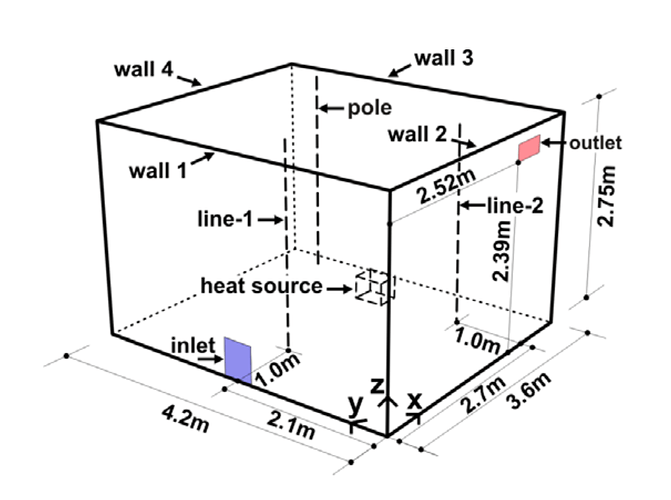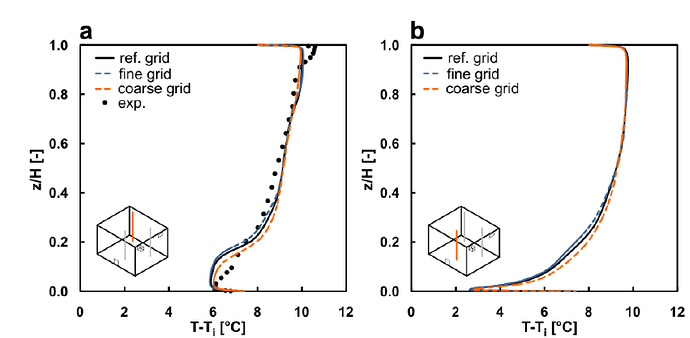Description:
Overview
Heating and ventilation (HVAC) plays an important role for indoor environments and knowledge of temperature stratification is important for occupant thermal comfort, indoor air quality and for the design and evaluation of displacement ventilation systems. Computational Fluid Dynamics (CFD) provides detailed flow and temperature field data for the entire computational domain and can be performed at full scale. The use of CFD for HVAC is increasing these days and thus the accuracy and validation of the model are essential. [1]
Input Data
The model can be created using the geometry dimensions as given in [1]:
The heat source with dimensions width × length × height = 0.3 × 0.4 × 0.3 m3 was placed 0.1 m above the floor level and 2.7 m from the inlet (Figure 1).
Complete details are provided in section 2,3 and Appendix of the paper.
- It is recommended to use a mesh, the turbulence model and setup based on the studies done in the paper.
Purpose
The purpose of this project is to validate the accuracy of the solver for a thermal comfort case of indoor ventilation with the experimental data presented in the paper. Typically a visual contours of the velocity and temperature field along with temperature plots along vertical lines is required.
A sample Temperature distribution image.
A sample Temperature distribution plot with experimental results.
Key Words
Computational Fluid Dynamics (CFD), Displacement ventilation, Buoyancy-driven ventilation, Room heating, Temperature stratification, Turbulence modeling, Age of air.
Literature & Sources
- [1] S. Gilani, H. Montazeri, B. Blocken “CFD simulation of stratified indoor environment in displacement ventilation: Validation and sensitivity analysis” [Ref-1]
Status
Not yet started.


